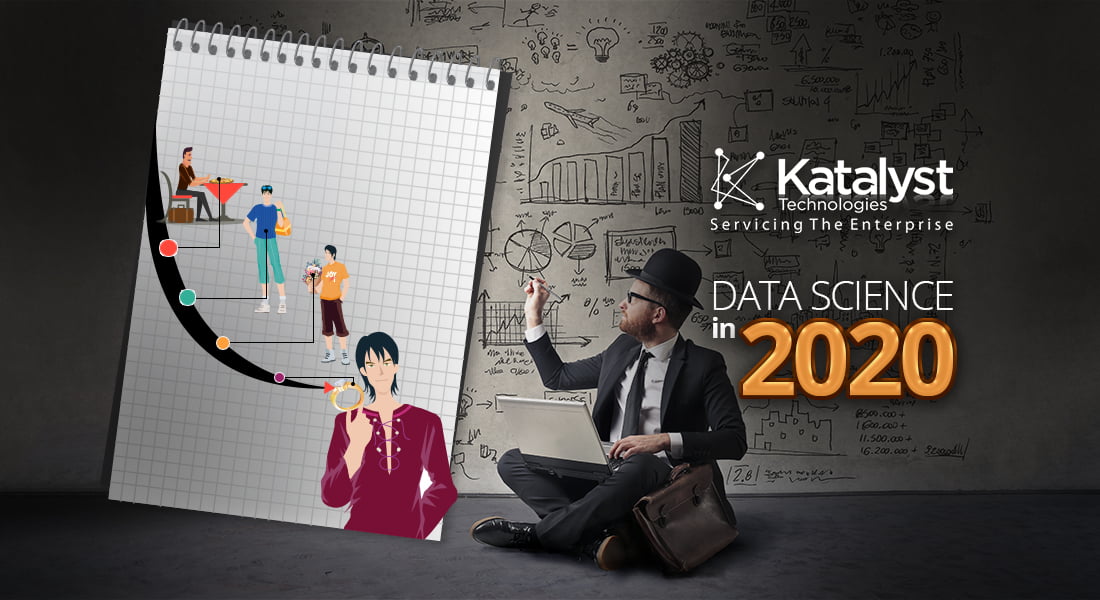
Data may now be the most intimidating four-letter word in our lexicon, causing enterprises to tremble with uncertainty. Simply put, there is too much data out there, and figuring out how to interpret and implement it can be a challenge. Yet proper collection and analysis could also give your organization its biggest competitive advantage. If your company’s resolution this year is to avoid getting overwhelmed by data, read on.
How Are You Storing Your Data?
The efficiency of data warehouses vs. data lakes can be debated and vary from company to company. Warehouses are typically more organized, while lakes offer more flexibility. However, “most companies don’t have data lakes,” says JT Kostman, Chief Executive Officer at ProtectedBy.AI. “They have a collection of data cesspools.”
Some organizations adopt an approach of collecting as much data as they can, but that simply makes it more complicated and frustrating when it comes time to study it. “People in business analytics are of the mind that all data is worthwhile, and it just isn’t,” says Kostman. “You have to bring that human lens to it first.”
Data has no purpose if it doesn’t lead to discoveries and opportunities. “If you don’t have the right tools to tap into insights from your data, it doesn’t matter if you have a lot of it or none at all,” says Partho Nath, Engineering Manager at Netomi. “It’s an interesting predicament, much like the ‘Water, water, everywhere. Nor any drop to drink.’”
How Are You Interpreting Your Data?
Kostman recounts one of his favorite instances of using a few pieces of data to form a narrative about a customer named Adam. “We know almost nothing about Adam,” he says. “We know his name is Adam. And as a consequence, we know he’s probably male. And we know he’s about 28 years old. Now, when we look at Adam’s transactions, we see a pattern every week like a ticking clock, Adam buys something related to sports, beer, and pizza.” The pattern continued for years, but suddenly, there was a change. “Pizza, beer, and sports [were] completely replaced by flowers, nice dinners, and cultural events…this goes on for about a year. And all of a sudden there’s a one-time purchase, equivalent to two months’ pay on Adam’s card.” Without ever having directly interacted with Adam, the story is clear. As a result, the company has the information to target certain goods and services towards Adam.
“Without data science, it is almost impossible to make informed decisions on how to optimize for success,” says Nath. “That’s what AI is all about.” Nath says that while companies wisely have increased their reliability on analytics, many organizations still adopt an inefficient approach. For example, some prefer developing their own AI tools from scratch when existing third-party solutions already exist. “By dedicating so much of their resources to rebuild a wheel that can ride in all terrains, retailers risk huge losses in opportunity cost.”
How Are You Implementing Your Data?
Modern consumer practices and technological breakthroughs make it necessary to find solutions sometimes before you even know a problem exists. “Companies need to reassess what’s possible because AI can open up a whole world of opportunities,” says Nath. He points to the clothing and apparel industries, where seasons often dictate sales, and what’s in vogue one day could be a fashion faux pas the next. “The trend towards fast-fashion needs the business to adapt to quick changes in trends and in fact, be able to catch trends before they bloom fully. The analysis presented by tools that can adapt to changing behaviors and give guidance will impact the supply chain, manufacturing, stocking of product, sales processes, and customer experience.”
However, retailers of all industries would benefit from successfully implementing data science. “When I was a little boy, my neighborhood grocer, Henry, ran this little grocerette,” remembers Kostman. “He knew what cereal I liked. He knew what kind of beer my dad drank. And he even knew when a holiday was coming up, or what days my dad had off from work. What was he doing? He was gathering data. Was it empirical data in the same form that we gathered it in now? No, but he knew. And so that becomes one of the keys for retailers is to focus on the data that actually matters, the data that is giving you insights.” Knowing Kostman’s cereal of choice could encourage Henry to promote similar products, and realizing when his dad might be out of town might inspire Henry to place a smaller beer order.
Katalyst Can Help
Data science may be difficult, but your organization doesn’t need to tackle it alone. Reach out to the experts at Katalyst to set up a consultation. We can help ensure you use your data effectively to improve the customer experience and position yourself for success.

